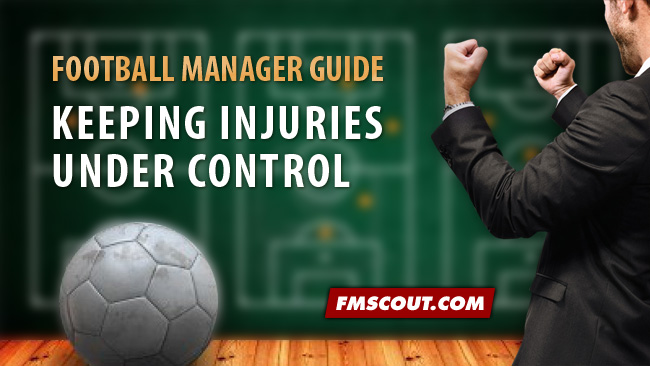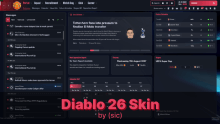
Selling your injury prone players
Written by Mohamed and StamOne of your first tasks as head coach should be to assess your current roster and look to offload the “deadwood”. By deadwood, we are usually referring to players who are not skilled enough to make it in your squad rotation, or players on unreasonably high wages, or injury prone ones. Having injury prone players, who are considered first team material, can be very damaging to any team as they are units/assets you can miss deeply when they are out injured. Your squad should not have injury prone players to avoid loss of form mid-season.
Injury prone players have a higher chance of being struck by injuries from the beginning, and it carries on until their retirement without having a way to improve that. However, this problem should not be so bad during their peak ages which varies from position to position. Surely there is a scale for the injury proneness attribute (1 to 20), but it is hidden by default and you should rely on the opinion by your staff (if you do not want to use a third party tool such as Genie Scout to find out). If your staff alert you about a player being somewhat susceptible to injuries, it means you could possibly live with that; but if they are certain about it, you should look to sell the player as soon as possible.
| How to improve your club's finances on Football Manager - Transfers
If you get an offer from another club which is over the player's value as well as his worth to you, consider it and maybe even try to negotiate. |
When selling such players, you need to pay attention to their current age and their current injury status. You should try to transfer injury prone players who are either old for the squad (over 27-28 years old) or too young (16-19) as they will not have lost their sale value, either because they have enough reputation to earn a transfer easily or injuries will not have occurred to them yet (at least not serious ones). Selling players around these ages ensures you will get a decent amount for them. In addition, these ages will be the easiest to replace, as old players will only have a few good seasons in them and the young ones will not have broke into the first team squad enough to make an impact yet.
Beware that, a player should not be injured when you are trying to offload him because the transfer will not be completed due to failing his medical. So if that player is active in your rotation, try to protect him by not using him in matches and maybe even put him on a very light training schedule (if at all) to minimize the injury risk. Of course it is not unreasonable to try and keep somewhat injury prone star players who are at their peak, but you need to take extreme care of them.
Points to take away:
- injury proneness attribute will not improve over the years
- try to sell them early and/or rely on their reputation
- an injured player will either fail a transfer deal or not attract interest
2. Selling your injury prone players
3. Intensity of training schedules
4. Choosing your best XI with fitness and condition in mind
5. Protecting your injury prone players
6. Having adequate cover to battle through injuries
7. Making subs during a match to prevent injury
8. Handling resting days
9. How to utilize staff as injury precaution and faster recovery
10. Important attributes that may affect the chances of getting injured
11. The impact of upgrading training and youth facilities









![FM24 2025-26 Real Fixture & Results (Start in 2025) [29-10-2025]](https://www.fmscout.com/datas/users/realresult_artv2_257759.png)


Discussion: Keeping Injuries Under Control on Football Manager
1 comments have been posted so far.
1, match instruction: "Get stuck in" - the stonger your player tackle the opposition the bigger the chance that he will hurt himself too.
2. individual opposition tackling instruction: "Hard" - the more opposition players are set to be tackled hard the more injuries your own players will pick up. Especially if you consider that the more attacking the position is usually the worse the tackling ability of the player is. I do not ask my midfilders and wingers to tackle opp. midfilders/wingers hard any more and their injuries substantially decreased.
3, level of fitness coaching: higher aerobic coaching helps to prevent injuries to occur.
and depending on how do you interpret what is already written in the article (was it aimed only at pre-season or not):
4, general training level during season: setting it higher (i.e. above average) increases the likelyhood of getting injured in training